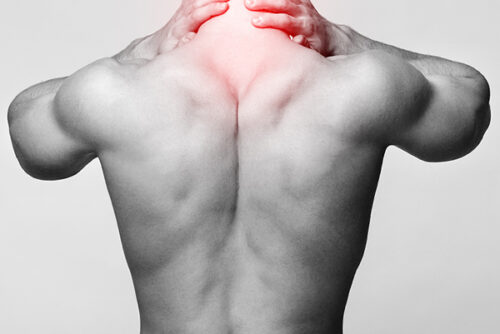
What causes low back pain?
Low back pain can result from muscle sprain, ligament strain, facet joint pain or damaged intervertebral discs (discogenic pain). Besides trauma or injury, the commonest cause for low back pain is age-related degeneration. Facet joints are the small joints between the bones in the spine. Besides causing low back pain, damaged discs can also press onto nerves and lead to sciatica – shooting pain that radiates into the legs.
What is the treatment for low back pain?
In general, painkillers, physiotherapy and early mobilisation will help about 80% of all cases of low back pain. Patients who do not recover despite conservative management may require interventional pain therapy.
What are the common types of interventional pain therapy?
These include muscle trigger point injections, epidural steroid injections, nerve root blocks, facet joint injections, disc decompression (nucleoplasty), annuloplasty, transdiscal biacuplasty as well as radiofrequency ablation.
Depending on the source of your pain, your doctor will advise you on the appropriate therapy.
Spinal Stenosis
What is spinal stenosis?
Spinal stenosis is a condition where there is narrowing within the spine, causing compression of the spinal cord and the nerve roots exiting from the spine. It can affect the neck (cervical spinal stenosis) or low back (lumbar spinal stenosis).
What are the symptoms of spinal stenosis?
Symptoms include neck or back pain, numbness, tingling or weakness in the arms and legs. In lumbar spinal stenosis, you may feel pain after walking a short distance and pain is relieved upon sitting down to rest.
Progressive weakness in the legs, loss of bladder or bowel control can also occur in severe spinal stenosis.
How is spinal stenosis treated?
Pain medication, physiotherapy and exercises can help alleviate symptoms temporarily.
Depending on the severity of the spinal stenosis, some patients may benefit from epidural steroid injections, and/or percutaneous disc decompression before definitive surgery.
Herniated Disc or Radiculopathy
What is radiculopathy?
Radiculopathy occurs when the nerve is pinched when exiting from the spine. It is most commonly due to a herniated disc (or slipped disc) in the neck or back that is compressing the nerve. Bone spurs, thickened ligaments, cysts or tumours can also cause radiculopathy.
What are the symptoms of radiculopathy?
Sharp, lancinating pain radiating into the arm or leg, associated with tingling sensation, numbness or weakness. There may also be loss of sensation in the arm or leg.
How is spinal stenosis treated?
Non-surgical treatment include pain medication, physiotherapy and rest.
Epidural steroid injections, nerve root blocks, pulsed radiofrequency and percutaneous disc decompression are some minimally-invasive procedures that can be effective.
Severe cases of radiculopathy will require surgical decompression.
Tailbone Pain (Coccydynia)
What is coccydynia?
Coccydynia is the medical term to describe pain in the tailbone, which lies at the end of the spinal column. It can result from trauma after a fall, repetitive injury from sports such as rowing or cycling, and from childbirth.
Being overweight or underweight may also lead coccydynia.
What are the symptoms of coccydynia?
Pain localised to the tailbone, which is worse with sitting. Sitting on hard surfaces or leaning backwards when sitting almost always aggravates symptoms.
How is coccydynia treated?
Avoid prolonged sitting, using a wedge- or donut-shaped cushion when sitting, strengthening pelvic muscles and taking pain medication when necessary.
Severe cases may benefit from steroid injection, nerve blocks, or radiofrequency ablation of the ganglion impar.
Surgical resection (coccygectomy) is rarely performed and may not guarantee that the pain will resolve.
Piriformis Syndrome
What is piriformis syndrome?
The piriformis is a small, deep muscle in the buttock. Piriformis syndrome occurs when the piriformis compresses the sciatic nerve causing pain and inflammation.
Prolonged sitting, long-distance running, climbing stairs, tight muscle from lack of exercises are common cause of piriformis syndrome.
What are the symptoms of piriformis syndrome?
Aching or sharp pain in the buttock with pain radiating into the leg. There may be associated tingling sensation, numbness or weakness in the affected leg.
Symptoms are aggravated by sitting, walking or running.
How is piriformis syndrome treated?
Non-surgical treatment include rest, stretching and strengthening exercises, taking pain medication and muscle relaxants.
Persistent pain may need piriformis muscle injection with either local anaesthetics or Botulinum toxin. Injections are performed under ultrasound guidance.



![pain-conditions-joint[1] pain-conditions-joint[1]](https://thepainclinic.com.sg/wp-content/uploads/2022/11/pain-conditions-joint1-500x334.jpg)
![pain-conditions-shingles[1] pain-conditions-shingles[1]](https://thepainclinic.com.sg/wp-content/uploads/2022/11/pain-conditions-shingles1-500x334.jpg)
![pain-conditions-trigeminal[1] pain-conditions-trigeminal[1]](https://thepainclinic.com.sg/wp-content/uploads/2022/11/pain-conditions-trigeminal1-500x334.jpg)
![pain-conditions-head[1] pain-conditions-head[1]](https://thepainclinic.com.sg/wp-content/uploads/2022/11/pain-conditions-head1-500x334.jpg)
![pain-conditions-neuro[1] pain-conditions-neuro[1]](https://thepainclinic.com.sg/wp-content/uploads/2022/11/pain-conditions-neuro1-500x334.jpg)
![pain-conditions-myofascial[1] pain-conditions-myofascial[1]](https://thepainclinic.com.sg/wp-content/uploads/2022/11/pain-conditions-myofascial1-500x334.jpg)
![pain-conditions-fibromyalgia[1] pain-conditions-fibromyalgia[1]](https://thepainclinic.com.sg/wp-content/uploads/2022/11/pain-conditions-fibromyalgia1-500x334.jpg)
![pain-conditions-cancer[1] pain-conditions-cancer[1]](https://thepainclinic.com.sg/wp-content/uploads/2022/11/pain-conditions-cancer1-500x334.jpg)
